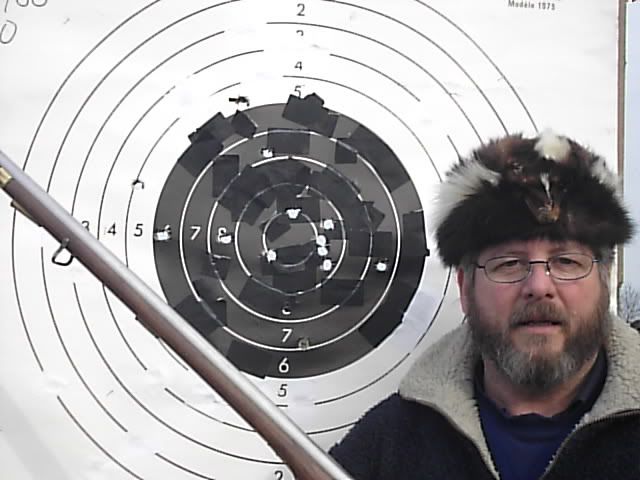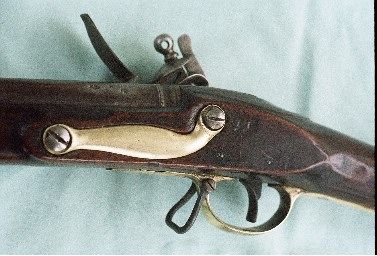- Joined
- Jun 13, 2005
- Messages
- 1,673
- Reaction score
- 38
So does mine... and they are in walnut.Don R said:Justmike's sure does look good.
Cheers,
DT


So does mine... and they are in walnut.Don R said:Justmike's sure does look good.

Well, that's just wrong. The 1756 Light Dragoon Carbine has a sling slider bar attatched to the left side of it that is probably about 10" to 12" long.What North Star West calls the Officer's Model Brown Bess is also known as the Light Dragoon Pattern Brown Bess.
I'd say that Light Dragoon Carbines were "usually" carried by Light Dragoons....seems logical :hmm: From my research and information at my disposal officers commissioned there own fire arms by private makers. I've seen and handled dozens of them. No self respecting British officer would have been seen carrying a common soldiers gun. His self commissioned fowler/musket would have been a status symbol. Now Serents on the other hand may have aquired these lighter handier guns, as they were poor enough they wouldn't have had the money to comission a gun from a private maker.Royal warrants of 1740 to 1750 suggest that, while fighting in North America, officers might replace pole arms with fusils of their own preference. This gun, originally developed in 1750 and sent into service by 1753, was usually owned by officers.
Don R said:Since i just bought one, I'm finding this discussion very interesting. There are references to officer's fusils in "Battle Weapons of the American Revolution" by Geroge C. Neumann, "Pattern Dates for British Ordnance Arms 1718-1783" by DeWitt Bailey, and "Muskets of the Revolution and the French and Indian Wars" by Bill Ahearn.
The NSW fusil does not have the the crown/broad arrow on the lock so it was not owned by the British government. The NSW site makes reference to it being a copy of gun in the Smithsonian collection. I would think that it is simply a copy of an officer's fusil privately contracted.
The lock dimensions match those given by Bailey for various carbines. The barrel length at 37.5" is very close to the artillery carbine. Lastly, the lock is marked Whately and and the only reference to that name is in Neumann's book in the description of an English Ferguson Rifle Fusil.
Don R
justmike said:I've obviously not seen the musket in the Smithsonian, but I can tell you a bit about the other musket in the picture with mine. It was made by the Board of Ordnance in the early 1800s and issued to Canadian Militia a few years later and is refered to as a Sergeants fusil. When it was discovered the lock and barrel were coated in a bitumen type substance. The barrel has BO proof and viewers marks also the initials TL - poss Thomas Lowndes of Birmingham. The lock has a BO cypher and Tower externaly and TH on the inside poss Thomas Hadley of Birmingham. On the tang are further viewers marks and the number 39. I guess that muddys the water a bit more ?

How do you know, have you seen the original gun?Swampman said:"The NSW fusil does not have the the crown/broad arrow on the lock"
Nor did the original gun they copied.
Mike Brooks said:justmike said:I've obviously not seen the musket in the Smithsonian, but I can tell you a bit about the other musket in the picture with mine. It was made by the Board of Ordnance in the early 1800s and issued to Canadian Militia a few years later and is refered to as a Sergeants fusil. When it was discovered the lock and barrel were coated in a bitumen type substance. The barrel has BO proof and viewers marks also the initials TL - poss Thomas Lowndes of Birmingham. The lock has a BO cypher and Tower externaly and TH on the inside poss Thomas Hadley of Birmingham. On the tang are further viewers marks and the number 39. I guess that muddys the water a bit more ?
I don't think you've muddied up the water at all. This could be the model of gun they copied. There are only a few differences between your original and the NSW gun. The trigger guards are slightly different, and I believe the NSW guns gurd is an earlier styled guard. And , the pipes are completely different. Checking thru my limited recourses, I can't find any british military gun that carries pipes that are styled quite like those.
I'm wondering, what kind of sideplate does your sergents carbine have?
Enter your email address to join: